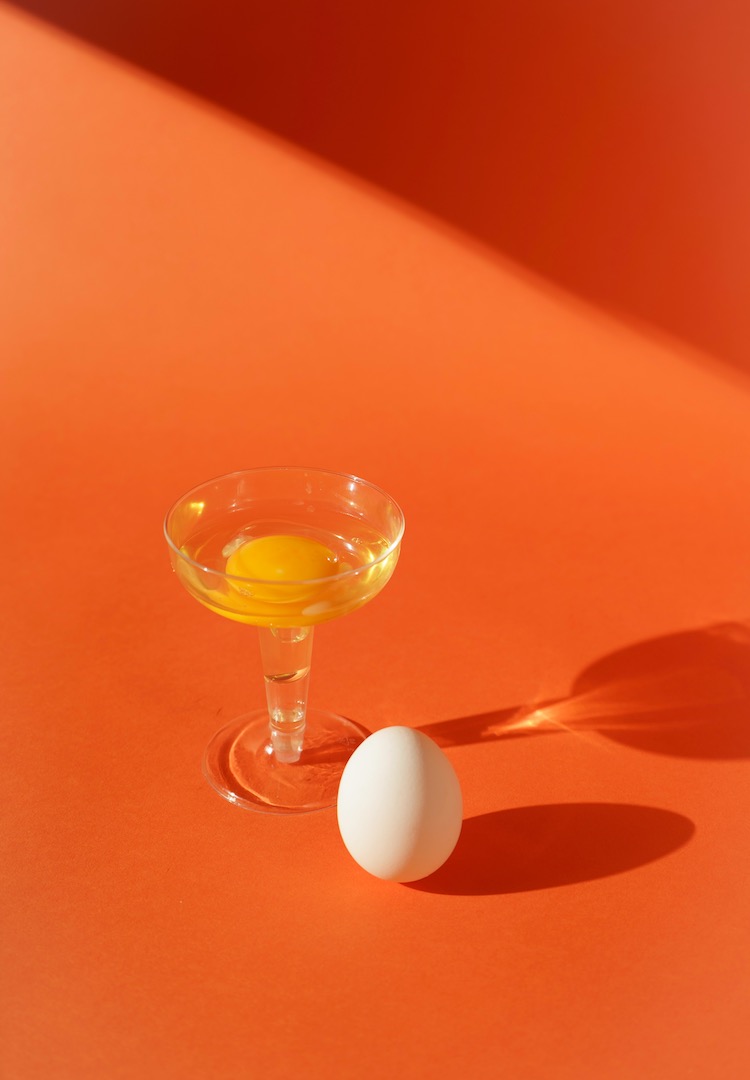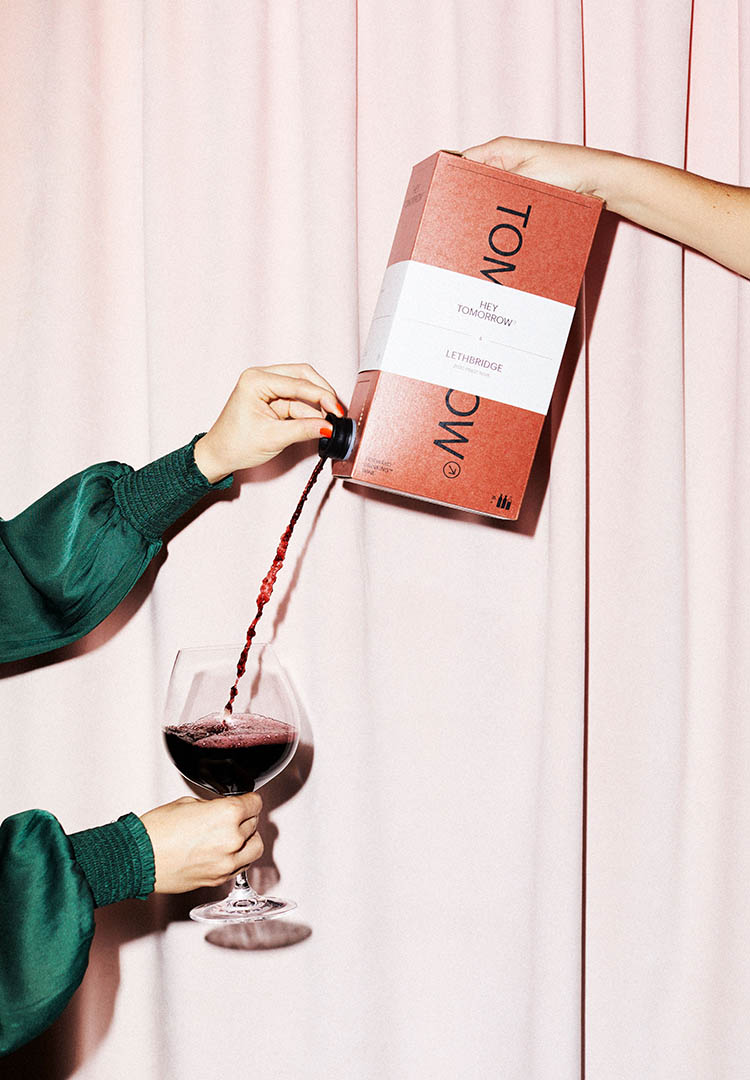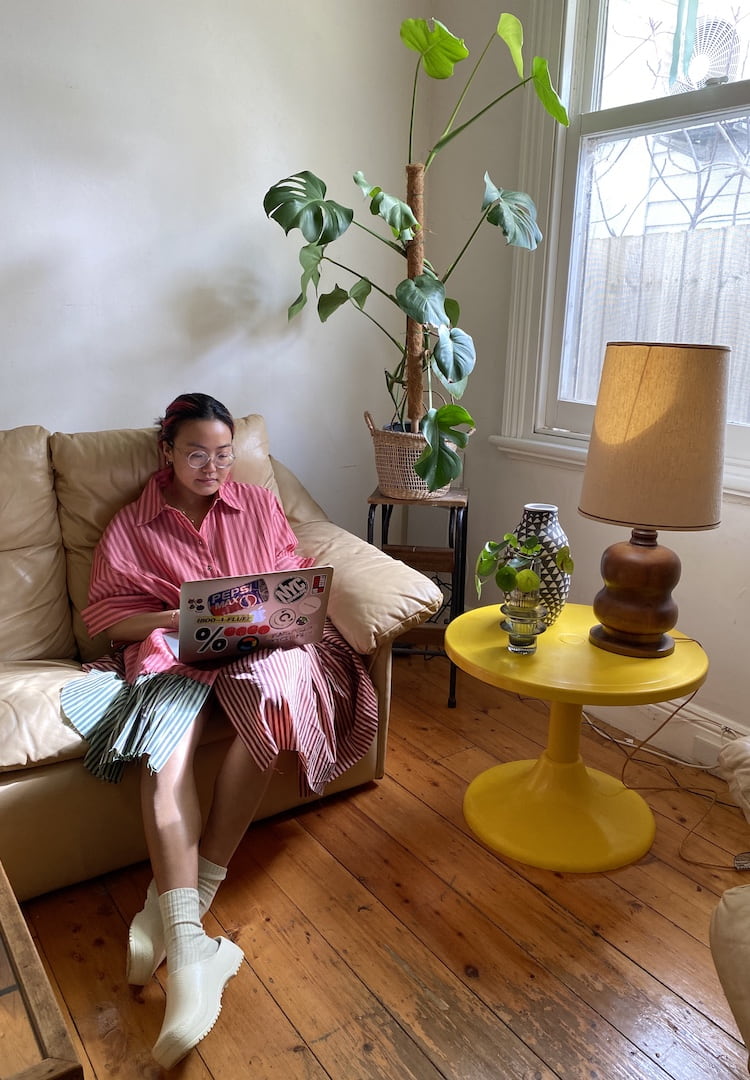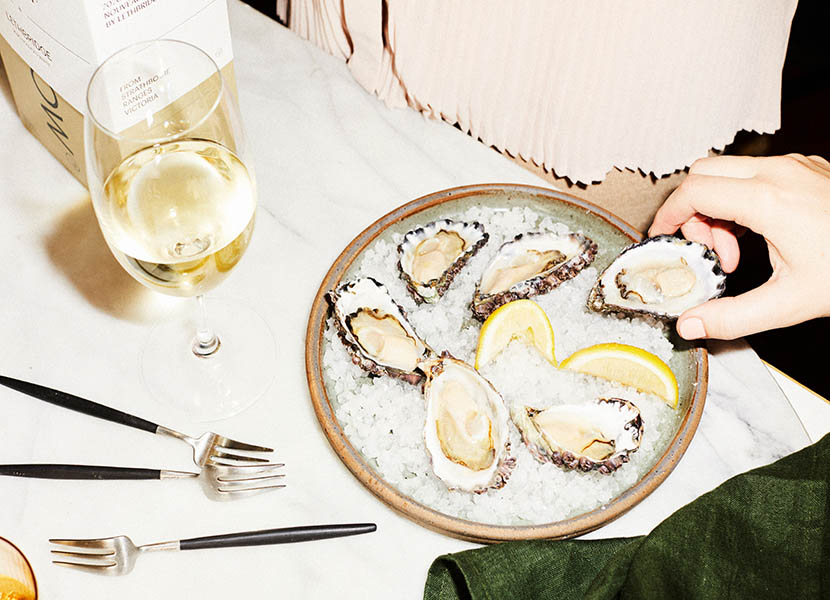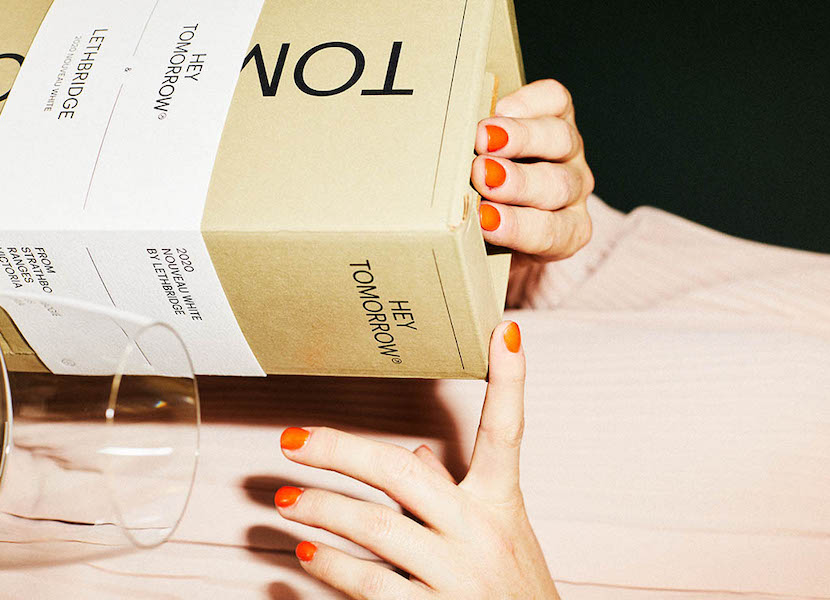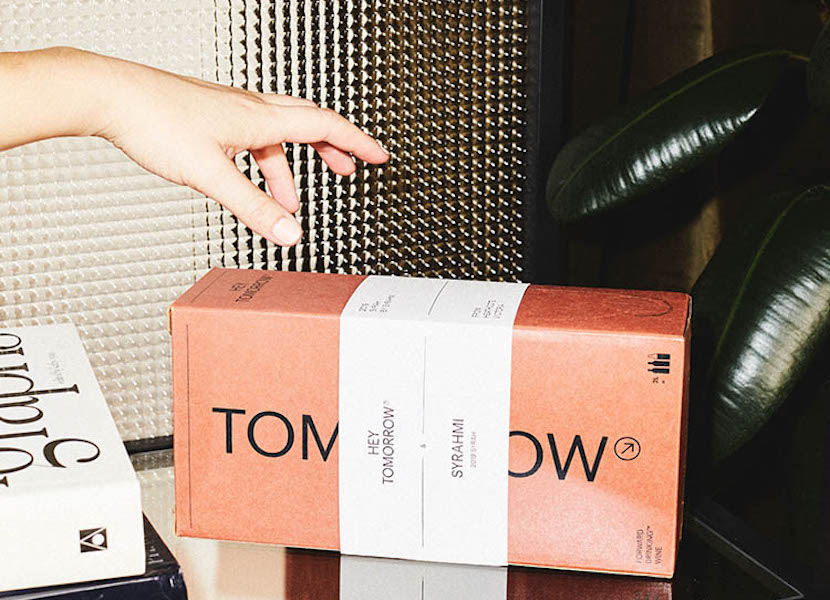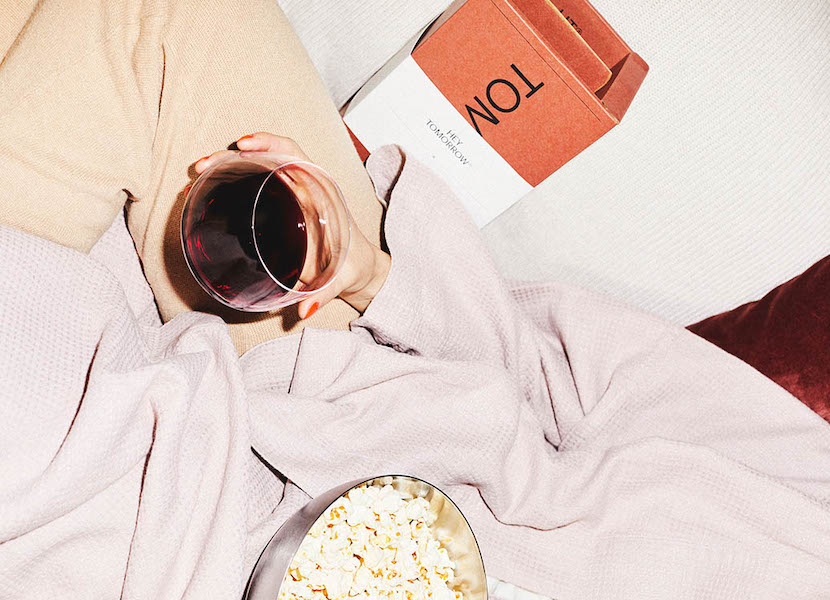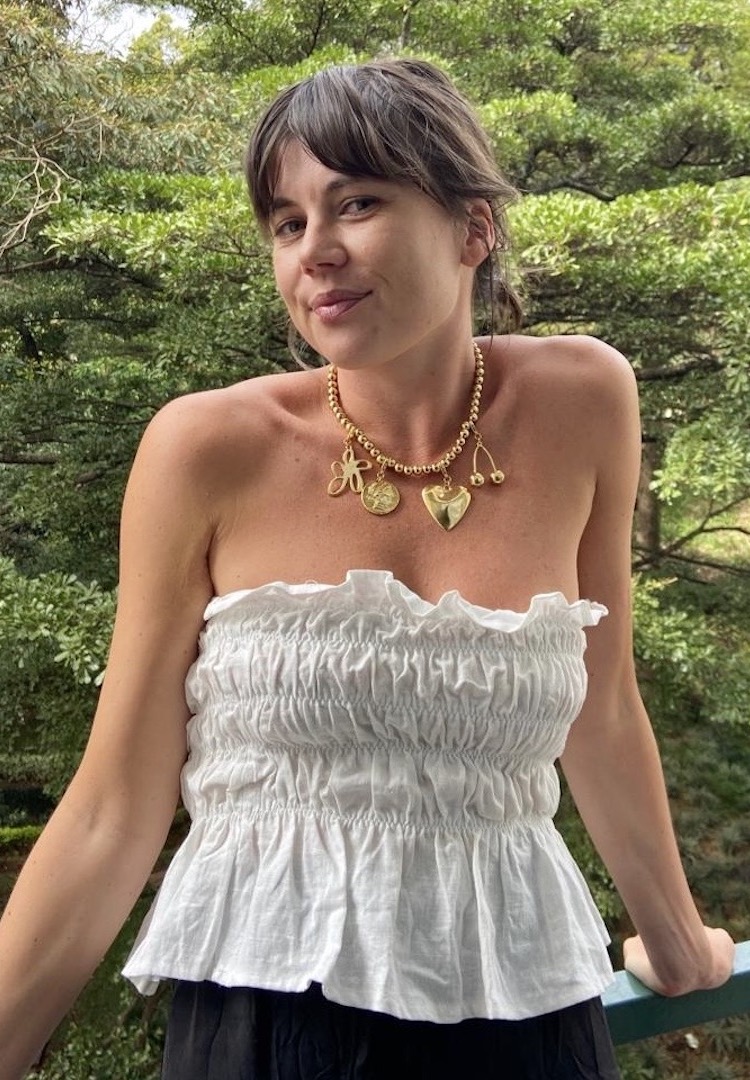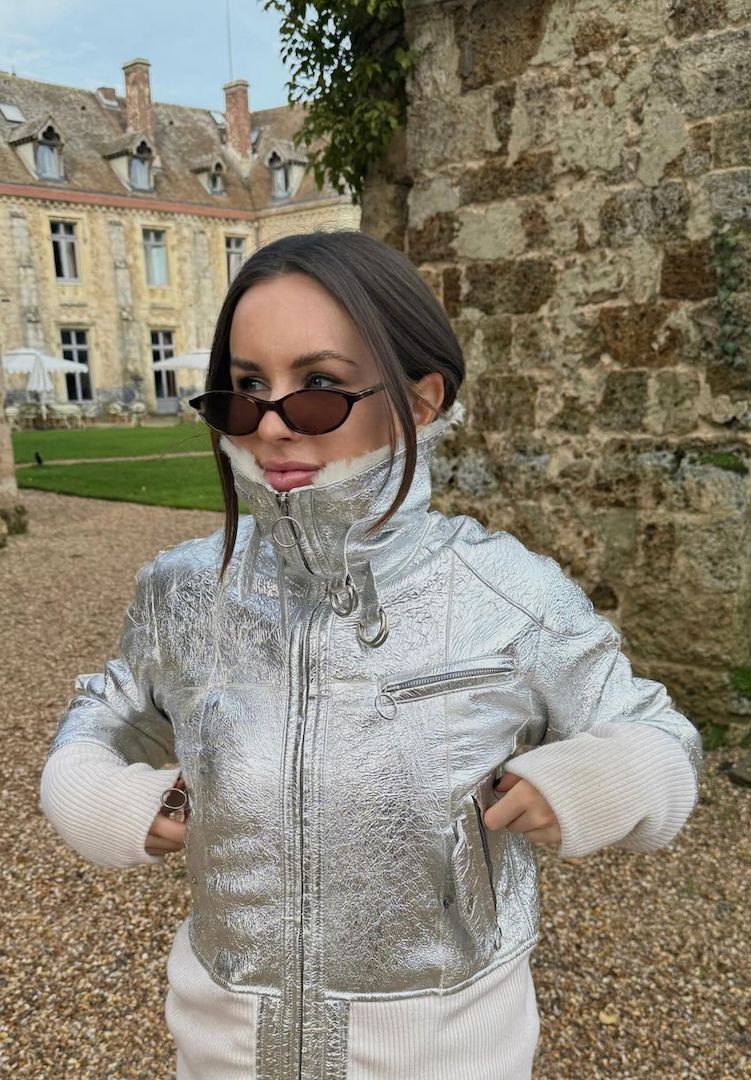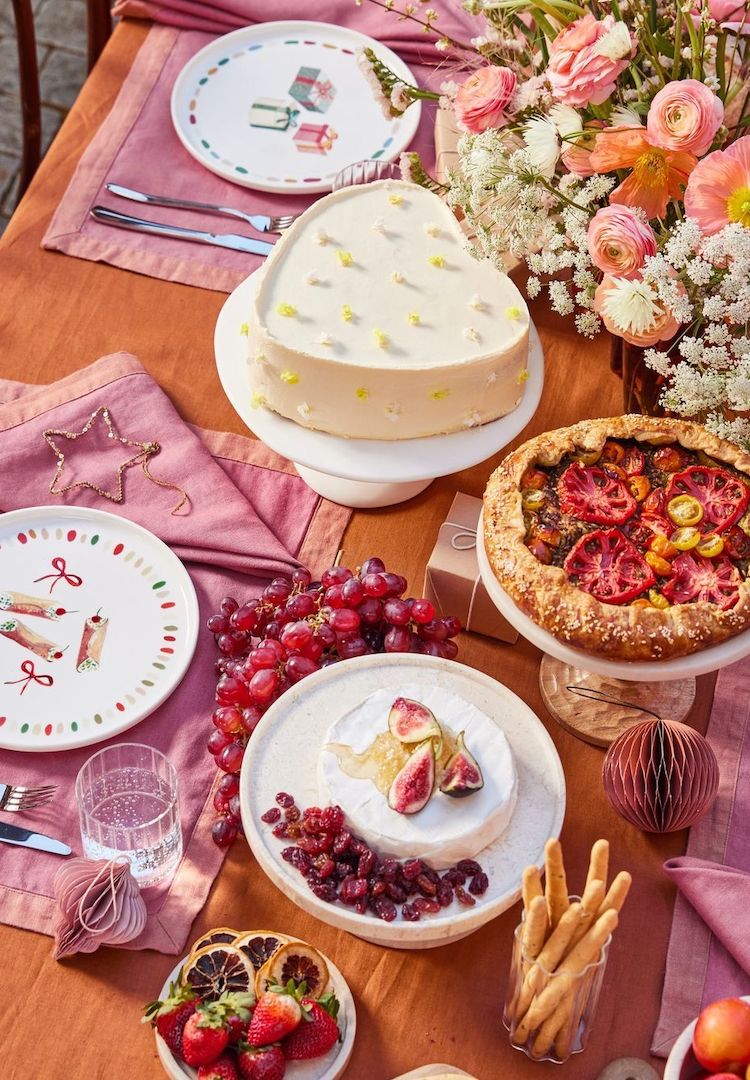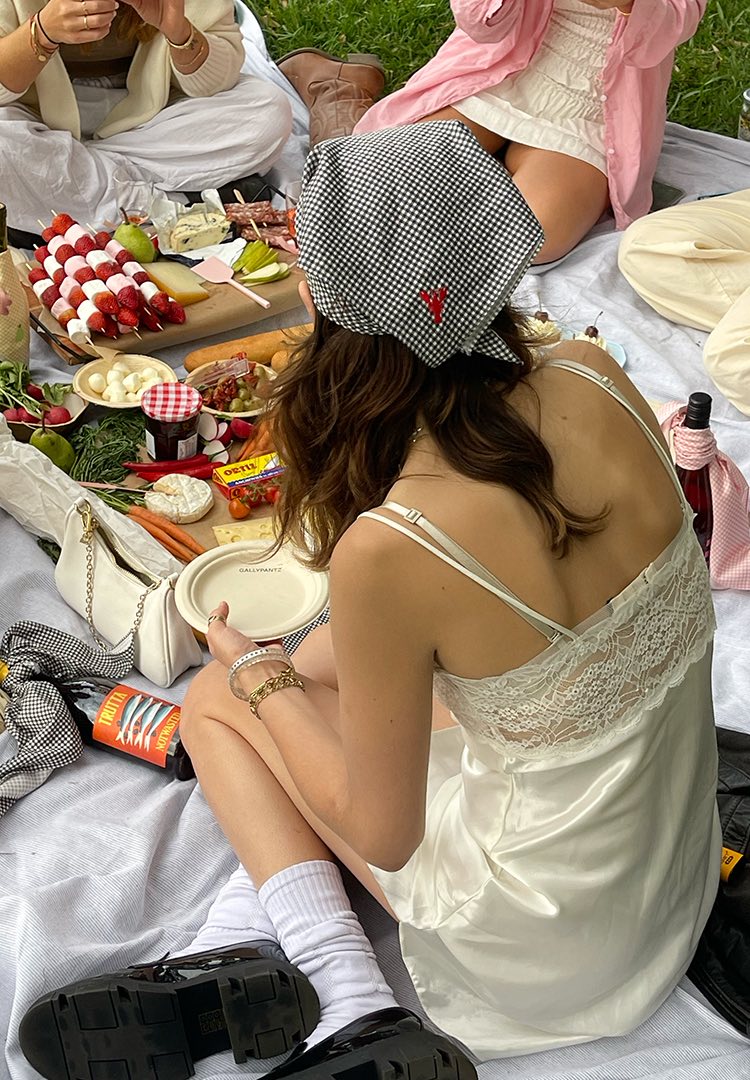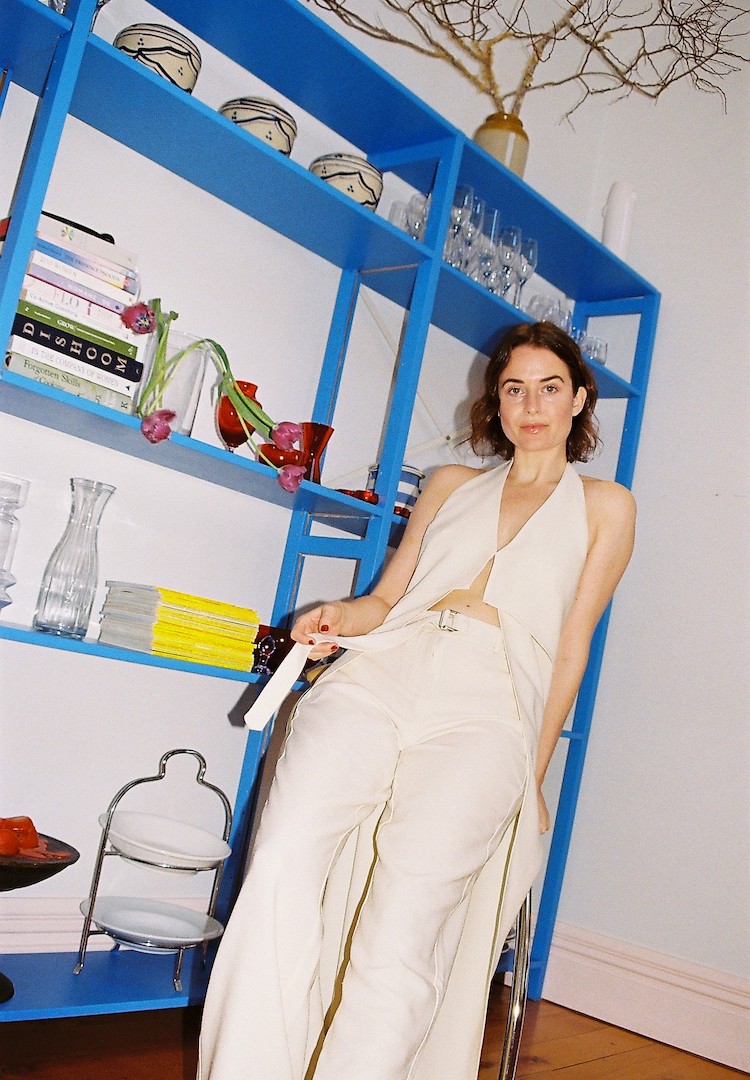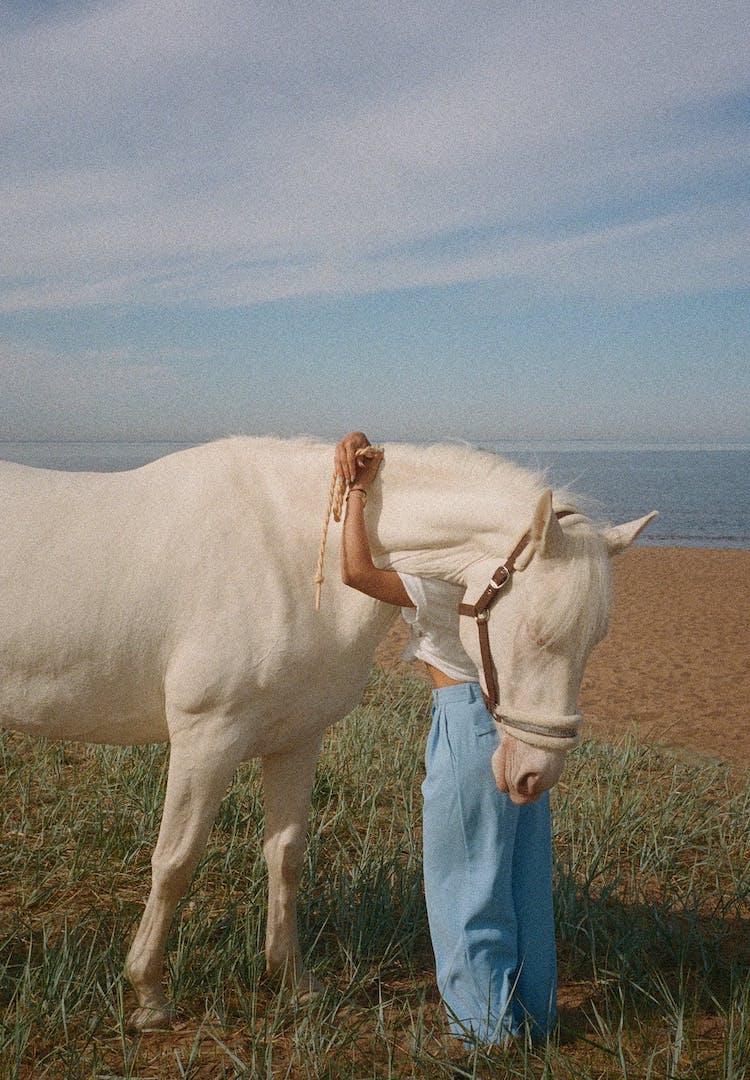Meet the Melburnians giving boxed wine an aesthetic and sustainable upgrade
Words by Eliza Sholly
A welcome juxtaposition to the chaotic tones of Fruity Lexia.
Like many cultural totems that seem to have just existed throughout my lifetime, I wasn’t aware of Australia’s initial foray into the goon sack business. South Australian winemaker Tom Angove was 47 when he patented his process for packaging cask wine. It was 1965, and he had been searching for a longer-lasting alternative to the traditional storage solution of a half-gallon flagon. So he made one.
I also wasn’t aware of its multitude of benefits – aside from its ergonomic ability to be pegged onto a clothesline, of course. Then I learnt about Hey Tomorrow.
Looking for more nourishing reads? Try our Life section.
Founded by two stalwarts of Melbourne’s hospitality industry, Hey Tomorrow is an attempt to break the stigma that exists around cask wine, instead proving just how great wine in a box can be.
Having tried it myself, I can confirm the product tastes excellent, lasts longer and tackles the sustainability conundrum that glass-bottle brands are yet to address. It can be enjoyed 28 days after the first pour, and contributes 82% less carbon emissions than traditional wine packaging. A lockdown solace if I’ve ever heard one.
At a time when the industry is reflecting on its ethical and economic responsibilities, supporting companies who invest in innovation (without compromising on quality and taste) is an important decision as a consumer. It also doesn’t hurt that the Hey Tomorrow packaging leans overtly-minimalist, a welcome juxtaposition to the chaotic tones of Fruity Lexia.
To further inquire into cask wine’s aesthetic upgrade, I quizzed part-owner Sacha Imrie (Bomba, Añada, Nomada and Daughter In Law) about the plan for Hey Tomorrow.
Does cask wine have a PR problem?
Absolutely, but unfairly so. Originally, the bag in a box wasn’t created specifically to hold cheap wine, it was designed to keep wine fresh.
Unfortunately, the added benefits of being less costly to produce, easier to palletise due to its shape, and cheaper to transport, happened to lend themselves perfectly to the cheaper, lower quality wine arena, hence the modern stigma it has.
Much of this image problem comes from all of the low quality product that many consumers have likely experienced, and probably some daggy design work too (both of those occur with bottles too though!).
There’s also the Goon of Fortune legacy. If only we were all rich enough to play drinking games with Champagne, it might be them that had the PR problem.
What interests you about the Australian wine scene?
Its incredible diversity. There are so many different styles that it’s difficult to be bored by the landscape here. You can grab a bottle of Tassie Chardonnay that would give many great Chablis wines a run for their money (check out Stargazer), easily sample wines that are decades older than you are, with the fortified wines of Rutherglen (Pfeifer is one of my favourites) or explore a variety you might not even heard of (Assyrtiko, Kerner, Slankamenka Bela, anyone?)
Meaningful conversation about wine has traditionally been gate-kept by the rich, travelled and privileged. Do you think this is changing?
I think there are a lot of tools and resources available now that make information about wine available on a much broader spectrum than previously accessible.
Websites and apps that are free to use, such as Winefolly and Instagram make it less intimidating and fun to share your wine tales.
Sustainability is often talked about in a fashion context – not so much in the food and beverage industry. Is it important to you to spread that message?
Our systems are under a great deal of stress. What we eat and drink is under direct threat from the climate emergency – it’s important that both consumers and people working in the food and beverage industry consider this.
Unfortunately, what may appear to be the most sustainable option, isn’t. The drink industry’s biggest contribution to carbon emissions is the production and transportation of glass bottles. Glass is bulky, heavy, fragile, energy-intensive to produce, and vast amounts that are put in the recycling bin, end up in landfill.
Box wine has a 10 times lower carbon footprint than the glass bottle equivalent. While bottles are great for wine that is sparkling, or that needs to be aged, most wine that we buy is consumed shortly afterwards, and simply not sustainable for that to keep happening in bottle.
Further, having wine in a cask can also be better for your health. How many times have you finished a bottle of wine because it would otherwise go to waste? With the bag in the box, you can pour a glass or two, and come back to it a week later and it still tastes fresh.
It’s more sustainable for your wallet too. Glass packaging adds to the price of your wine, and when you take that out of the equation, more of your dollar goes the beverage. You also don’t have to waste money by pouring away wine that’s spoiled.
In addition to this, we are donating 50 per cent of profits to The Carbon Farming Foundation.
How would you describe the wine without describing the wine?
I think our designer, Motherbird Studios, has done an excellent job of that – the look of the boxes really nails and encompasses the vibe of the actual wines.
A lot of people dream about quitting their job in pursuit of greener, side-hustled pastures. What does it take?
I think everyone in the Hey Tomorrow team is really lucky to be genuinely passionate about the industry that we work in, so for us this is more of an expansion of our interests. Be prepared to invest a lot of time, energy and creative thinking.
Your most memorable wine moment?
At the Clove Club in London, we were having wines matched to our meal. The Somm would come over, show us the bottle, tell us about the wine, and pour us a glass that matched each dish. We had just been served a duck consommé, and they came over with a 100-year-old D’Oliveira boal Madeira. They were swirling it around in a decanter, and telling us this enchanting story about the wine, and then all of a sudden, they dump it straight into the soup. Everyone at the table was like ‘whoa wtf?!’ But it was the best, and most literal, food and wine pairing I’ve ever had.
Got any tips for a novice to appreciate wine without sounding pretentious?
Say exactly what you think of the wine, even if that is just ‘this is delicious,’ and then get on with having a good time.
Learn more about boxed wine and Hey Tomorrow’s offering here.

